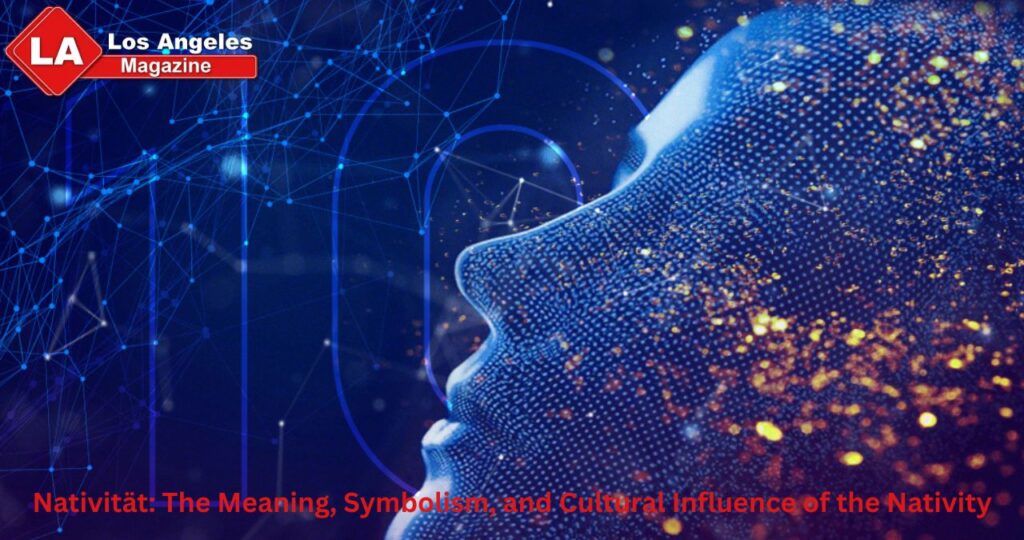The word “Nativität”, derived from the Latin nativitas, meaning “birth,” holds deep significance in history, religion, and art. In many cultures, especially within Christian tradition, Nativität refers to the birth of Jesus Christ — a moment considered sacred and transformative. Over centuries, this concept has grown beyond its theological roots, inspiring countless works of art, music, literature, and cultural celebrations. The idea of Nativität is not just about an event that happened over two thousand years ago; it represents the timeless themes of hope, renewal, and divine love.
The Etymology and Meaning of Nativität
The term Nativität is the German word for “Nativity,” which originates from the Latin nativitas — meaning “birth” or “origin.” Linguistically, the term encompasses both the literal act of being born and the spiritual implications of new beginnings.
In religious contexts, Nativität refers to the birth of Jesus Christ in Bethlehem, as described in the Gospels of Matthew and Luke. However, the concept extends beyond Christianity. It captures the universal human fascination with beginnings — the miracle of life and the wonder associated with creation itself.
Theologically, the Nativität symbolizes the incarnation: God becoming human to dwell among people. But philosophically, it can also be viewed as a metaphor for renewal and spiritual awakening — a reminder that every person experiences their own form of “nativity” when discovering purpose or undergoing transformation.
The Biblical Narrative of the Nativität
The story of the Nativität Christi (Nativity of Christ) is one of the most well-known narratives in human history. According to the Bible, the Virgin Mary and Joseph traveled from Nazareth to Bethlehem, where Mary gave birth to Jesus in humble surroundings because there was no room at the inn. The newborn was placed in a manger, surrounded by animals, symbolizing simplicity and purity.
Shepherds, guided by angels, were the first to visit the child — representing humility and faith. Later, the Wise Men or Magi from the East followed the Star of Bethlehem, bringing gifts of gold, frankincense, and myrrh. Each element of the story — the manger, the star, the gifts, the visitors — carries layers of symbolic meaning that artists, theologians, and poets have explored for centuries.
This story became the foundation of Christian celebration during Christmas and continues to influence art, music, and culture across the world.
Nativität in Art and Iconography
The theme of Nativität has inspired artists for over a millennium. From the early mosaics of Ravenna to the masterpieces of Renaissance painters, the depiction of the birth of Christ remains one of the most beloved and frequently represented subjects in Western art.
In early Christian art, the Nativity scene was often symbolic rather than realistic, focusing on divine light and heavenly presence. During the Middle Ages, artists began incorporating more human elements, showing Mary’s tenderness and Joseph’s humility. The Renaissance brought emotional realism — figures like Botticelli, Leonardo da Vinci, and Caravaggio captured the miracle of birth with natural beauty and divine radiance.
In German-speaking countries, depictions of the Heilige Nativität (Holy Nativity) often emphasize serenity and devotion. Wooden carvings, altarpieces, and illuminated manuscripts showcase the sacred moment with an emphasis on warmth and reverence.
Even in contemporary art, the Nativität continues to inspire reinterpretations — from abstract symbolism to modern photography, reminding viewers of its universal relevance.
The Nativität in Music and Literature
Music has always been one of the most powerful ways to express the beauty of the Nativität. From Gregorian chants to grand oratorios, composers have celebrated this sacred birth through melody and harmony.
Johann Sebastian Bach’s Weihnachtsoratorium (Christmas Oratorio) remains one of the most famous musical tributes to the Nativität, combining profound spirituality with artistic brilliance. Similarly, Franz Schubert and Josef Rheinberger composed works inspired by the Christmas story, blending theology and emotion into timeless art.
In literature, poets and writers across centuries have used the Nativität as a metaphor for hope, rebirth, and divine grace. From medieval mystery plays to modern prose, the theme of birth as a spiritual awakening continues to resonate deeply with audiences worldwide.
The Symbolism of the Nativität
Beyond its religious foundation, Nativität carries a rich tapestry of symbols. Each figure and element within the Nativity story serves as a metaphor for virtues and universal truths.
- Mary represents faith, obedience, and maternal love — the human vessel chosen for divine purpose.
- Joseph stands for humility, guidance, and silent strength.
- The Child Jesus embodies hope, salvation, and new beginnings.
- The Star of Bethlehem symbolizes guidance and divine direction.
- The Shepherds represent ordinary humanity, whose faith makes them worthy witnesses of miracles.
- The Magi signify wisdom and the universality of divine revelation — that truth and light are available to all who seek them.
These symbols transcend religious boundaries. Even those outside the Christian faith can relate to the Nativität as a story about love overcoming hardship, humility defeating pride, and light emerging from darkness.
The Cultural Celebration of Nativität
Across the world, the Feast of the Nativität is celebrated as Christmas — a time of joy, family, and reflection. In Germany, where the word “Nativität” is part of the traditional lexicon, Christmas markets, nativity scenes (Krippen), and carols create a festive atmosphere that combines spirituality and community.
Traditional Krippenspiele (nativity plays) are performed in schools and churches, reenacting the story of Jesus’ birth. These performances are not just religious acts but cultural traditions that teach children compassion, faith, and generosity.
The Nativität also influences seasonal customs such as Advent calendars, candle lighting, and Christmas Eve services. Each practice reflects the anticipation of light entering the world — both literally and symbolically.
The Philosophical Dimension of Nativität
Beyond its religious celebration, Nativität holds profound philosophical meaning. Birth — whether of a person, an idea, or a movement — always represents renewal. It is the beginning of something that carries the potential to change the world.
When seen through this lens, the Nativität of Christ becomes not only a historical event but also an allegory for transformation. It invites people to rediscover innocence, humility, and compassion in their own lives. Every act of kindness, every moment of forgiveness, can be seen as a small form of “nativity” — a rebirth of light within the human heart.
This broader interpretation gives the concept of Nativität universal significance. It reminds us that even in times of darkness, there is always the potential for new beginnings.
Modern Interpretations and Relevance
In contemporary society, where commercialization often overshadows spirituality, revisiting the true meaning of Nativität can bring perspective and peace. Artists, theologians, and writers continue to reinterpret the concept, reminding us that it is not about material celebration but about love, humility, and hope.
Modern nativity scenes sometimes feature diverse characters or modern settings, reflecting inclusivity and the belief that the message of the Nativität belongs to all humanity. In this way, the concept remains timeless — adaptable to each generation’s understanding of faith and compassion.
Conclusion
The Nativität stands as one of the most enduring symbols of faith, art, and human connection. Whether viewed as a sacred mystery or as a metaphor for new beginnings, it carries an eternal message: that light will always return, and that every birth — physical or spiritual — is a promise of renewal.
Through centuries of art, music, and cultural celebration, the Nativität continues to inspire awe and reflection. It reminds us that even in simplicity, there is divinity; even in hardship, there is hope.
Ultimately, the story of the Nativität transcends religion. It is the story of humanity’s enduring belief in goodness, love, and the miraculous power of new beginnings — a message as relevant today as it was two thousand years ago.



